lpg refit
2022.02.02
Victoria, Canada
Click below dates for more recent updates:
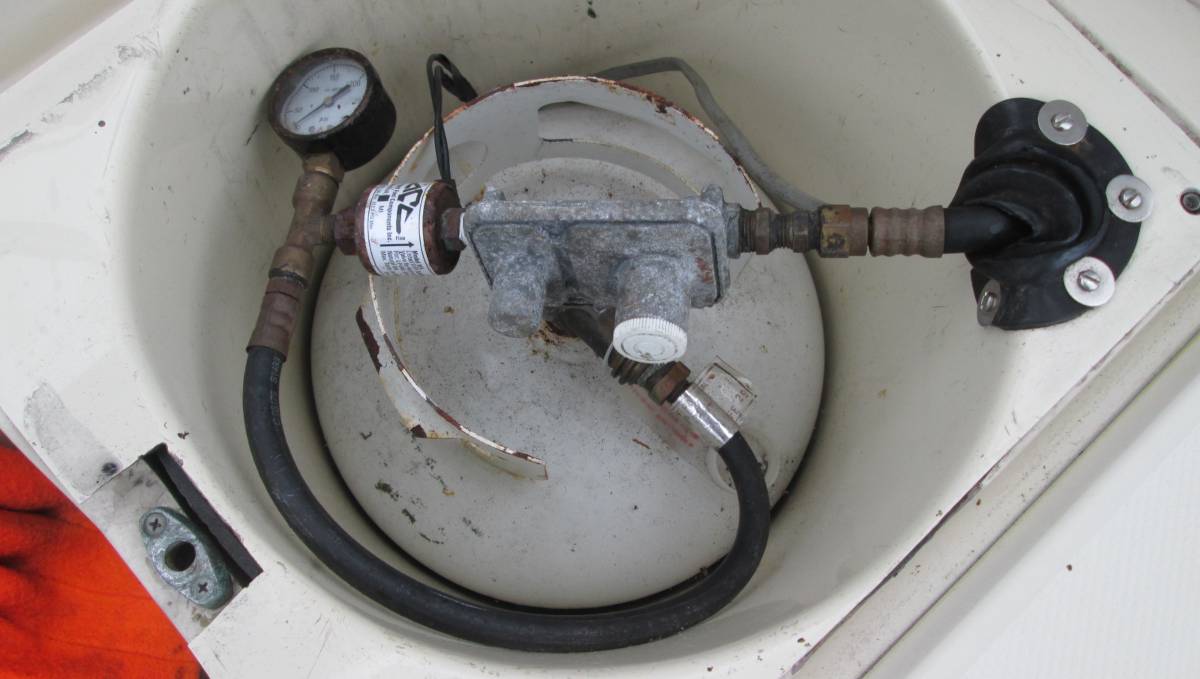
When we bought Pino in 2016, the propane system had an aged appearance but was still good. When we arrived back in Canada after our Pacific circumnavigation the various components had deteriorated, the solenoid and pressure gauge had a thick ugly red coat of rust. To get liability insurance, to be allowed to dock anywhere, a boat has to be surveyed every 5 years. We had Pino looked at in August 2022 and as expected, the surveyor deemed our propane system 'in dire need of rejuvenation'. So, for our liability to be valid and to avoid a potentially disastrous leak, we had to update the system.
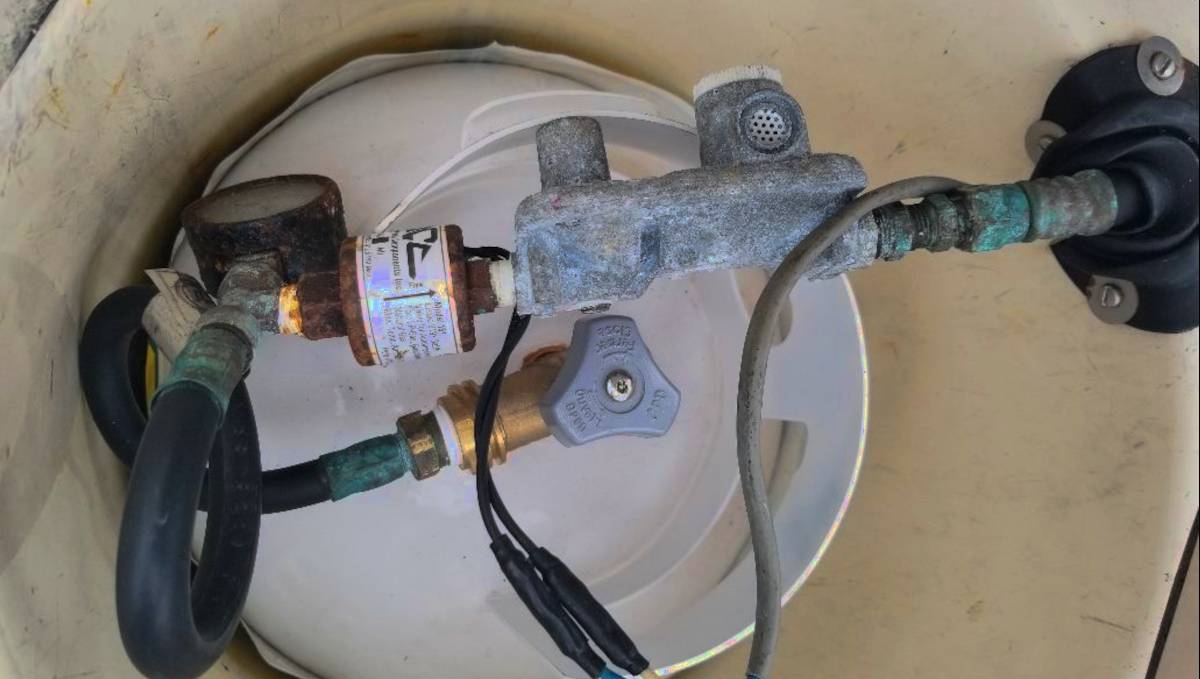
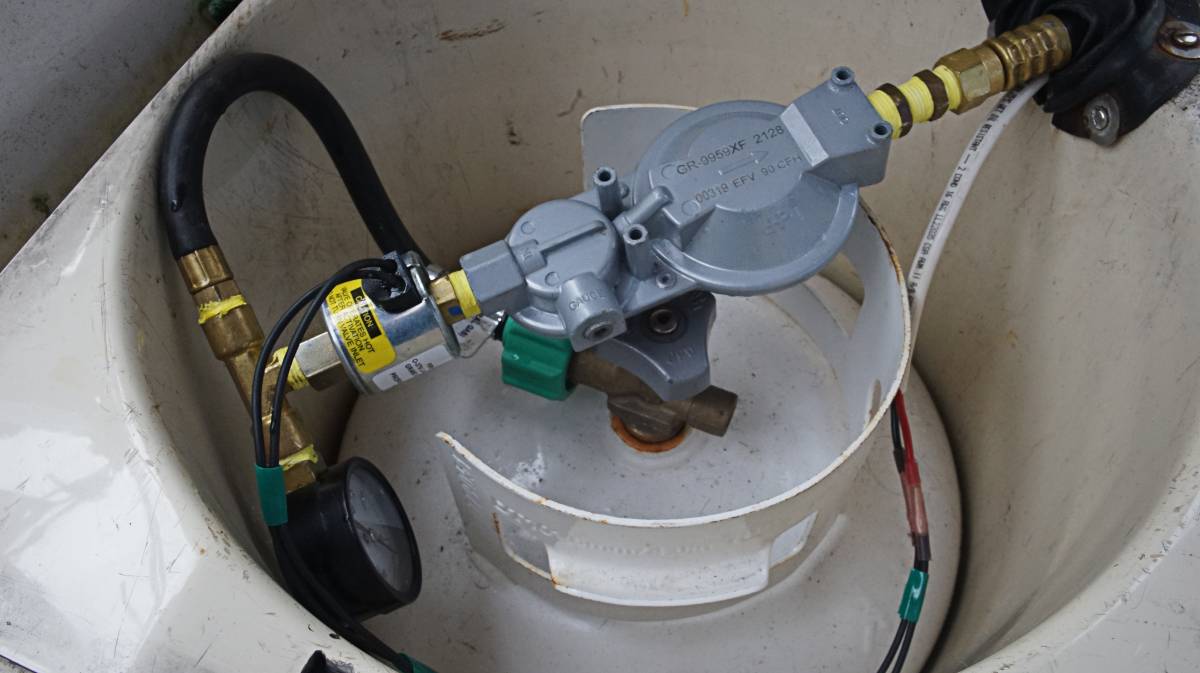
Prior to changing to newer LPG components, we experimented with using an alcohol stove (winter 2021) to see if we could change to a simpler system. Propane setups are complex, and producing your own cooking gas is not possible. Alcohol, on the other hand, is possible to produce on a small scale. Producing alcohol on a boat with limited capacity for producing energy though is not easy and we need plenty to produce our own alcohol.
We toyed around with the idea of passive distillation using solar to produce small amounts, but this system may only be possible in high summer (those with experience could tell us). We would still like to try this someday, parts for such a system are easy enough to find. Of course, we would have to make space for such a setup, and real estate on Pino continues to be a problem.
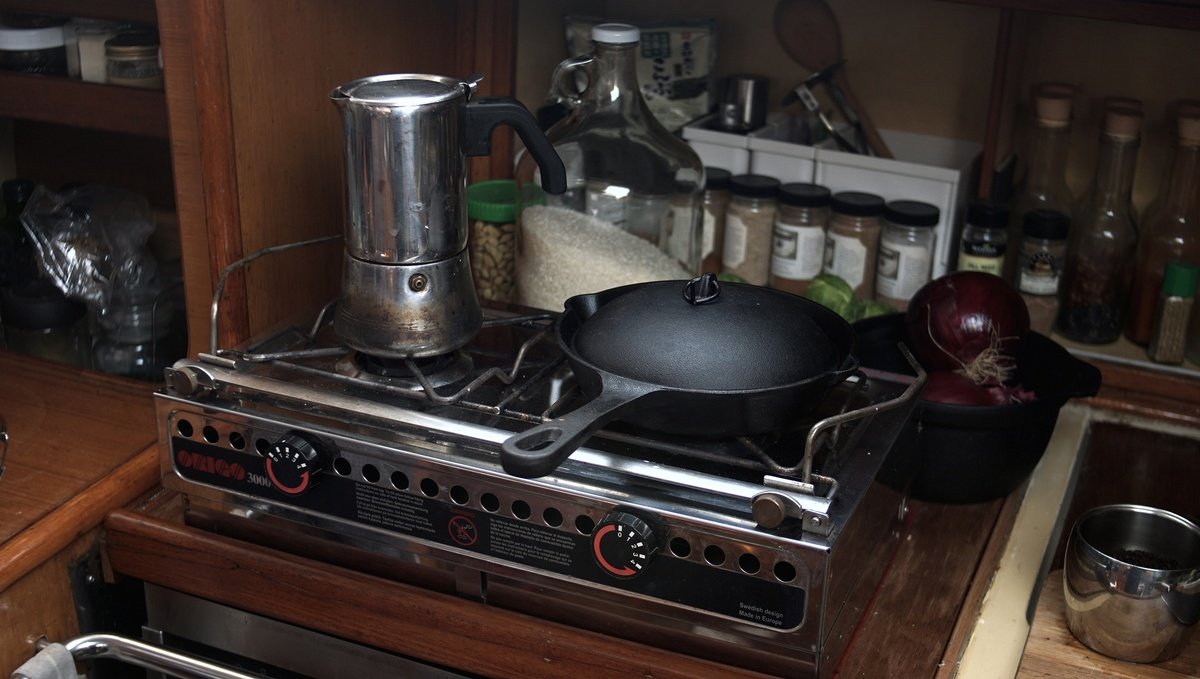
We found a used two-burner Origo stove (non-pressurized) through UsedVictoria. It was a good little stove, very safe and very compact, the only downside was that in Canada it is very difficult to find affordable and safe alcohol to cook with. Because of past accidents, the sale of marine alcohol (denatured alcohol) has been reduced to near zero. Stores keep little in stock. We have found denatured alcohol in metal cans in hardware stores, but these are unbelievably expensive and we think, have too many toxic additives (as a result, the alcohol reeks).
We cooked with methyl hydrate(methanol) for a while, while it burns well and is inexpensive to buy, it is highly toxic and filling containers became a worrisome experience. Methanol is absorbed through the skin, stomach, or lungs and much of it becomes formaldehyde in the body, which changes to formic acid in the liver. Formic acid can cause death or damage to the brain or optic nerve leading to blindness.
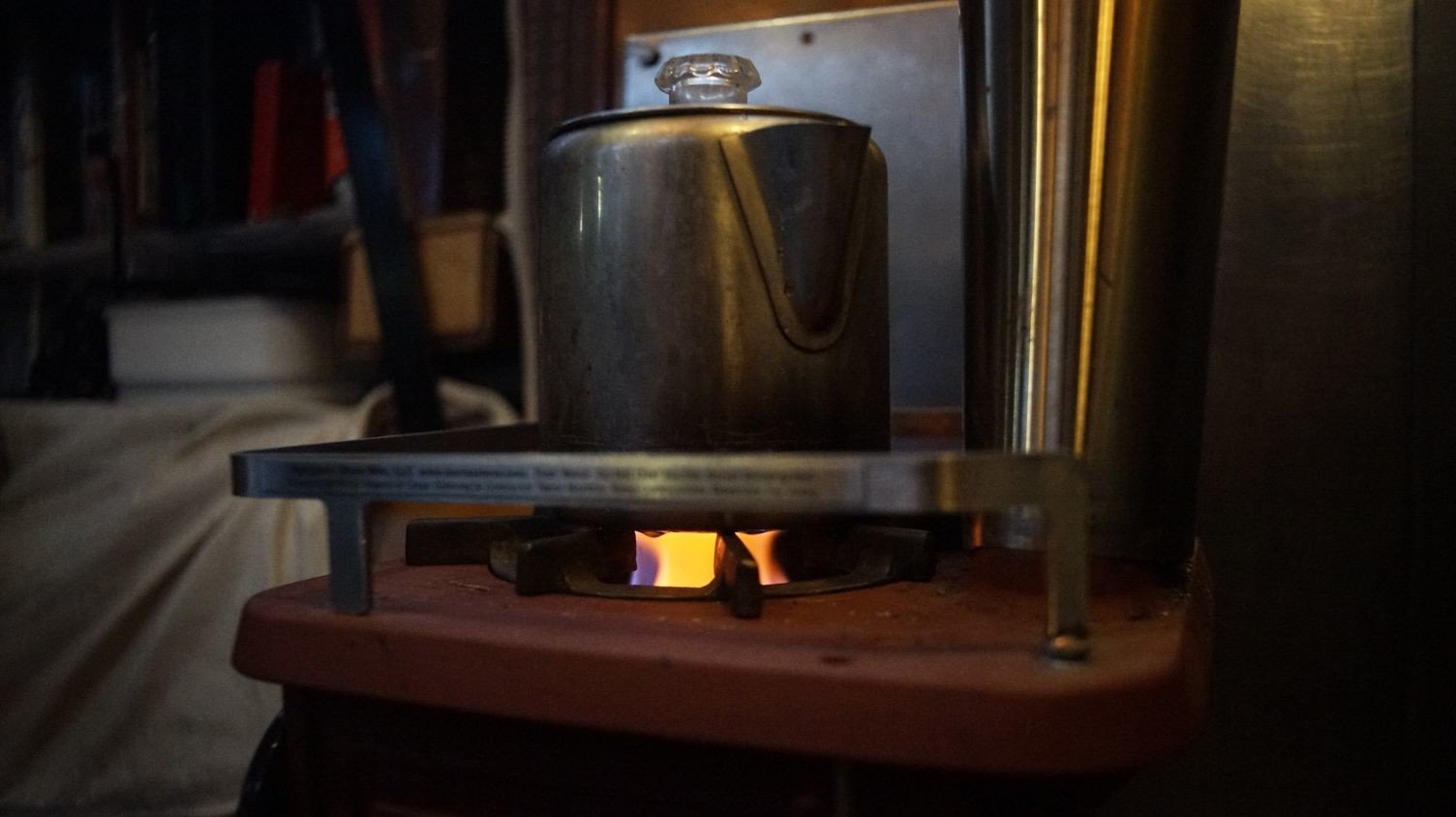
Because we still wanted the option of cooking with alcohol, we sold the Origo and instead bought a secondhand drop-in alcohol burner for our woodstove. The drop-in takes up less room, and has fewer parts that can degrade or fail. The drop-in has become a back-up for cooking in the summer. We buy small quantities of denatured alcohol to use in it, but for now we have no plans to rely on it entirely(while we're in Canada) because of its high cost, that is unless we can figure out our to do solar distillation. See our notes on alcohol stoves.
In June 2022 we ran out of propane while in Desolation Sound, in Western Canada, and we used the alcohol burner to cook our food until we could reach a port where we could re-fill the tank.
Propane is not ideal, like diesel it is high energy, but the fact remains that it is a finite and dirty resource, and because it is we are careful when it comes to saving fuel. In the winter time, when in port, when we have access to shore power, we like induction cooking. LPG is reserved for spending time off the grid.
For our system refit, we contacted Propane Depot in Vancouver and asked for their propane marine components which consisted of the following:
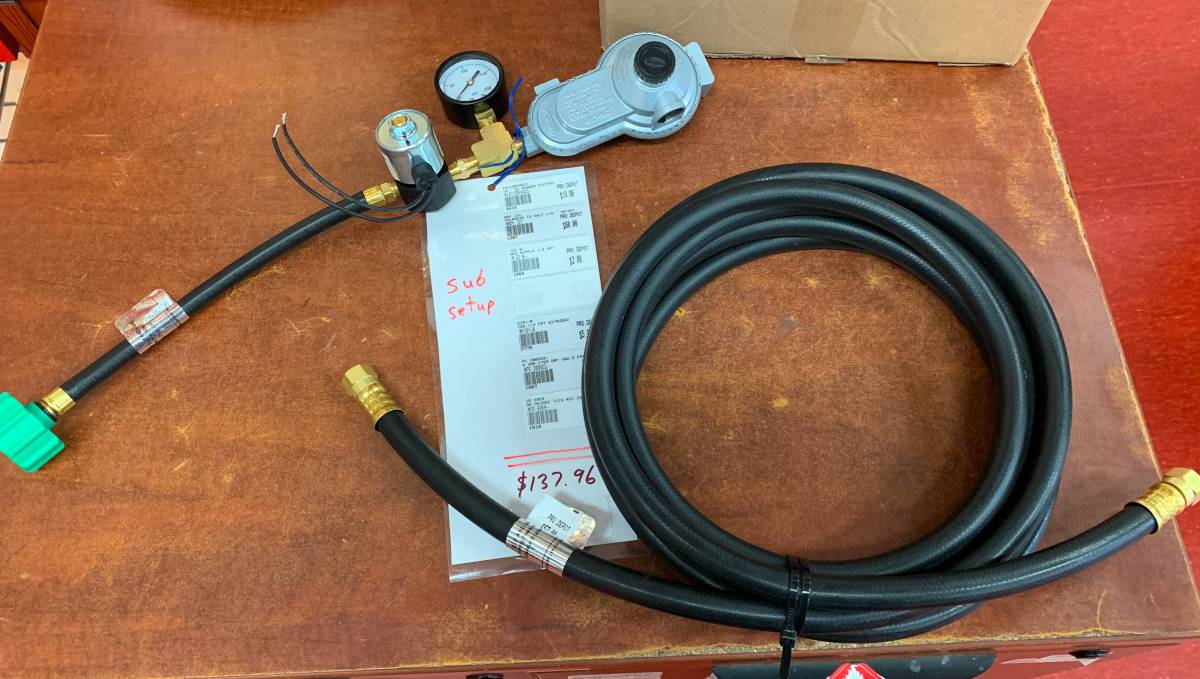
- A pigtail hose with quick close coupling nut
- 3/8" 15 ft pressure hose
- A 1/4" FPT tee fitting
- A 1/4" MPT HEX nipple
- A pressure gauge
- A two-stage regulator
- 12-volt solenoid
The only component we kept was the sniffer, the electronic control panel that turns the solenoid on and off and that checks for leaks in the system (that turned out to be a mistake because the control panel stopped working in the summer of 2023).
Order of Components of Standard Marine Set-Up
When putting propane systems together, components ought to be in the following order:
- [1] LPG tank
- [2] Pigtail hose to pressure gauge, or gauge directly on tank
The gauge isn't there to indicate the level of the gas in the tank, the weight the of tank determines that. The gauge is a way to detect leaks the system. - [3] High-pressure 12V solenoid
A high-pressure solenoid, rated for 312 psi(A121 by Advanced Fuel Components Inc.), is ideal because it shuts off the gas upstream of the regulator and the rest of the system, they're better quality than low pressure solenoids. - [4] Two stage regulator
Reduces the pressure from 250 psi(tank side, varies widely with temperature) to 11″WC in the gas line to the appliance.
The two wires coming out of the solenoid that connect back to the control panel(or circuit breaker depending on the model) are interchangeable. Fusing the positives is recommended, that is unless the circuit breaker is the correct amperage to protect the circuit. The lowest amperage offered on modern North-American pre-built DC circuit breaker panels is 5 amps, and the smallest required fuse sized for our solenoid is 1 amp(positive power wire to circuit breaker). Our model has another inline 2 amp fuse for the wire between the display unit and the solenoid(yellow switching ground).
Thread Sealant
All pipe threads were covered with teflon tape to help prevent leaks**.
"The recommended method for tightening propane fittings is to use a wrench. A good rule of thumb is to tighten the fitting until you feel resistance, and then give it an additional quarter to half turn with a wrench. This method will help ensure that the fitting is tight enough to prevent leaks, but not so tight as to cause damage."[Source]
Soap Test
We had a slow leak for a while that was difficult to detect, that is until we rubbed soapy water over all fittings (and found a stream of bubbles at the connection between the solenoid and tank). Each piece was to be tightened in the right order, and well, because afterward re-tightening a part at an earlier stage of the system may mean loosening another (because of how the treading works, this is especially true for the regulator).
Because there is air in the system, it can take a while for the gas to reach the burner when first using the stove.
Mistakes
When updating the system we made two mistakes:
- Wrong type of tee fitting
- Hose was too short
Tee fitting. The space in our propane locker is restricted, and unfortunately new parts change overtime and are not guaranteed to measure the same. The two-stage regulator was longer than our old one, and getting all the components in a short enough line was impossible, especially with the tee fitting we had. The pressure gauge could not be inline with the rest, and had to be on the top end of a tee fitting. We replaced the fitting with the same type that was part of our old system, a 1/4" tee fitting with 3 arms with an inside thread (one for the pressure gauge, one for the solenoid and another for the pigtail to tank connection). We read that it was possible to put the pressure gauge before or after the solenoid, we chose before (it's the only way it could fit in our locker, and it's how it used to be setup before). Placing it there means that it is on the high-pressure side, but it is built to withstand such pressure. In hindsight, we ought to have asked for the exact same parts, but we assumed they'd be the same...
Hose. We also switched to a 6 m (20 ft) long hose, instead of 4.5 m (15 ft). It is always a good idea to take out a hose and to measure it rather than estimating its length (we have to stop doing that...). We measured it without removing it, measuring the spaces we could reach, but it is too difficult to be accurate and removing it is the very best way to get a precise measurement. The hose is 9.5 mm (3/8 in), a flexible rubber hose rated for high-pressure. If you don't know the diameter of the hose, it is is written on the body of the hose itself. Rigid hoses are not recommended on boat because it is too difficult to route them, although they do recommend running the hoses through a plastic sleeve (especially when running through bulkheads) to avoid chafe and ruptures.
When we received the new propane parts, we were surprised to see that the pigtail fitting was different. Our old fitting (if you look at the photo above) was a screw-in type Standard QCC fiting, now the new quick close version screws on the outside of the propane tank valve. Removing it is easier with the new type of fitting, and we were quite pleased with this change in design... that is until we ran out of propane while in Desolation Sound (see above note). We always carry a 5 lbs (Japanese) tank to use while waiting to get the main 20 lbs tank re-filled, but we realized on that day that it is only possible to connect the smaller to our system via an inside threaded Standard POL connection. The valve of the Japanese tank has no outside thread.
So, voila, we replaced the propane system on our boat. It wasn't difficult or scary to do, but ordering the right parts will certainly make the job easier.
Price list:
- Hose with quick close coupling pigtail 19.96$
- 3/8" 20 ft pressure hose 70$
- A 1/4" tee fitting: 3$
- A 1/4" MPT HEX nipple: 2$
- A pressure gauge: 20$
- A two-stage regulator: 130$
- 12-volt solenoid: 60$
- Solenoid control panel and sniffer(with extra solenoid, acquired in 2024): 390$, see gimballed stove
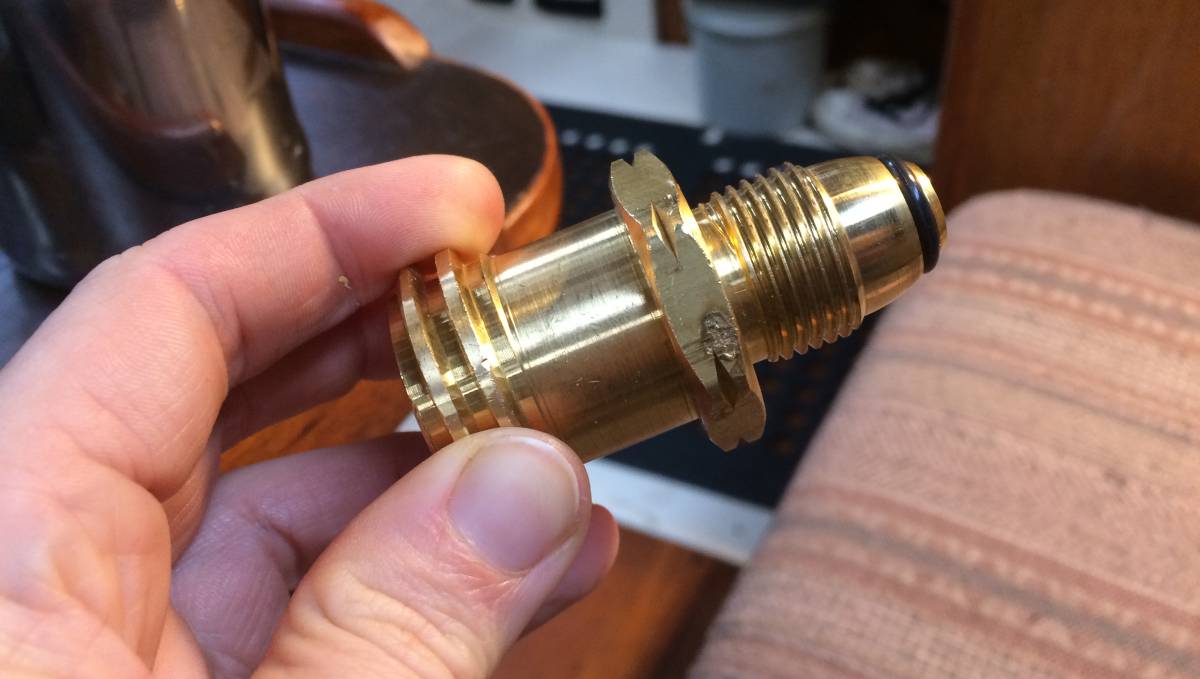
We found a male QCC adapter for male POL (New Line in Victoria, BC). It costs about 40$. Now we can use the Japanese tank.
The GS/5 propane leak detector failed today, see lpg fume detection system for more details.
We sold our 3-burner LPG stove and scaled down to a single burner, see our gimballed stove. We also installed a new control panel and sniffer.